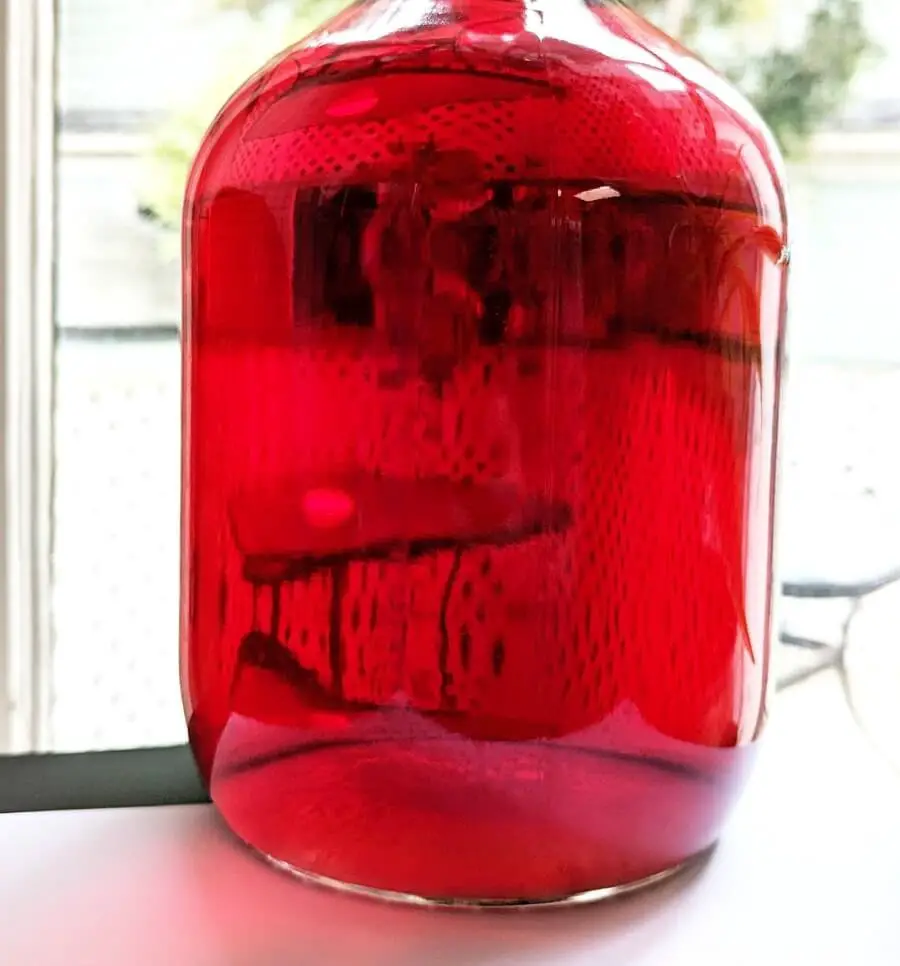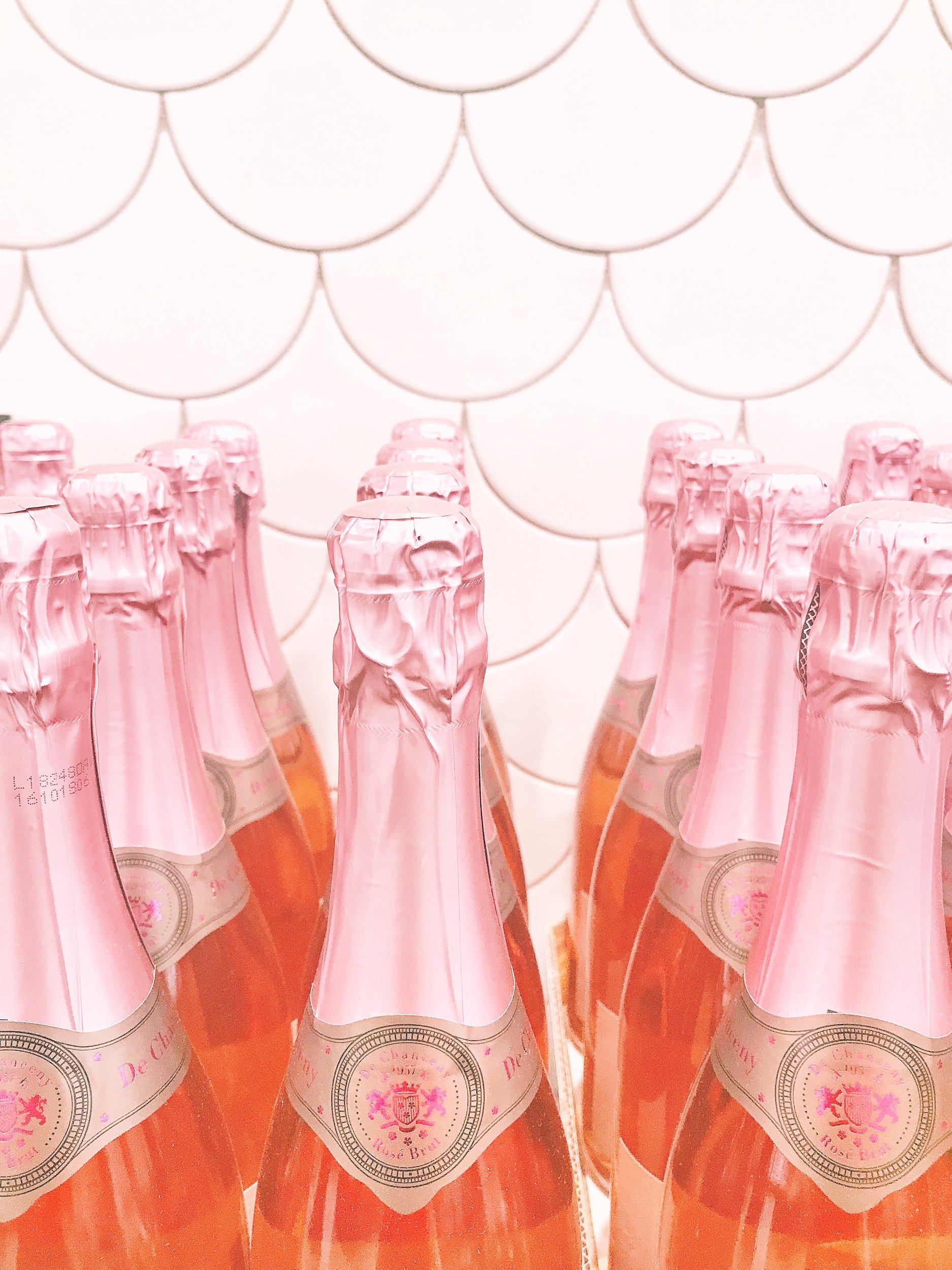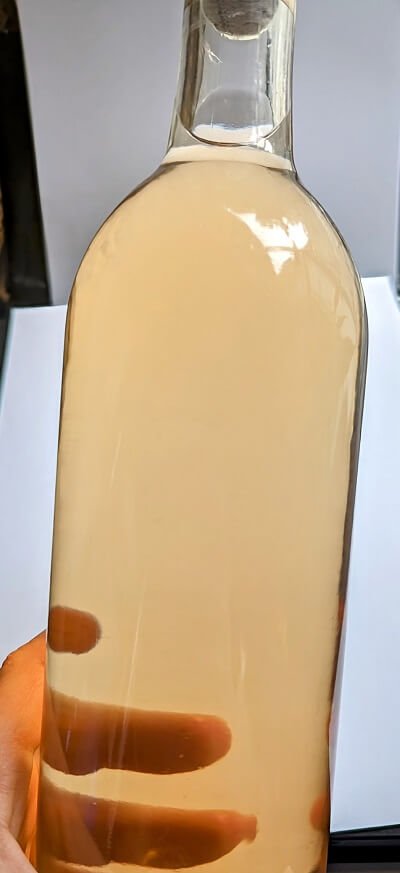
Who doesn’t love an uncomplicated glass of chilled rose wine on a lazy afternoon?
There are four ways to make rosé wine: maceration, direct press, saigneé, and blending. Winemakers choose one method over the other based on the pink wine style they want to make, and in some regions, tradition.
Here’s what you need to know about making rose wines.
- How Is Rosé Made Method 1 – Maceration
- How Is Rosé Wine Made Method 2 – Direct Press
- How Is Rose Made Method 3 – Saigneé
- How Is Rose Wine Made Method 4 – Blending
- Does Rose Have Red Dye in It?
- So, What Makes Rose Wine Pink?
- Why Is Rose Pink and Not Red?
- Is Rose Wine Always Pink? Nope!
- Final Thoughts – How Does Rose Get Its Color?
How Is Rosé Made Method 1 – Maceration
Maceration’s the most common method used to make rosé wines.
The winemaker takes red grapes, like Grenache or Pinot Noir, crushes them to release their juice, then leaves the juice in contact with the skins for a period of time, sometimes this is as short as a few hours, sometimes it can be 2 or more days.
The longer the juice is in contact with the grape skins, the darker the resulting wine.
The opposite is true, too: brief contact time with the grape skins means lighter pinks.
Grape skins hold most of the flavor and aroma compounds, as well as tannins. They give your wine body, texture, and flavor.
So, you can expect that darker pink rosé wines will be fuller-bodied. Lighter rosé wines will be lighter-bodied.
Helpful Tip: A rose’s pink color gives you clues about the wine’s style. Lighter pinks will pair better with salads and dishes with subtle flavors. Vibrant pink rosé wines will pair with dishes that have bolder flavors.
Back to winemaking.
The winemaker samples the juice continually while it’s macerating to test the color and flavors. Once the juice achieves the desired color, the winemaker presses the juice off the skins and starts the fermentation. Yay!
Discover: Rose wine and cheese pairing guide
How Is Rosé Wine Made Method 2 – Direct Press
The second method for crafting rose wines is called direct press. In French, you’ll see this as vin gris (vaahh gree) or “gray wine”.
In the direct press method, the winemaker uses red grapes and presses the grapes directly after harvest without crushing the berries. In some instances, the winemaker may destem, but most often the whole bunch clusters get added directly to the wine press.
The direct press method limits skin contact.
Direct press makes the lightest color of rosé wines, which is currently popular. Just how light can a rosé wine be? Direct press rosé wines can take on a white peach or even sandy hue, with no pink at all.
Helpful Tip: You’ll find the direct press rose wine style made in Provence, France.
How Is Rose Made Method 3 – Saigneé
The saigneé method, which translates to “bleeding”, is used when winemakers are also making a red wine.
The winemaker crushes red grapes and lets the wine sit, again for a few hours to a few days (maceration), and then drains off a portion of the juice, which is now pink, from a larger tank of red wine grapes.
The main tank is destined to make a regular red wine. The rosé juice can be any shade of pink, from pale blush to vibrant magenta.
Why do winemakers choose the saigneé method?
The winemaker uses this method to craft fuller-bodied, more concentrated red wines – and also is able to sell a rose wine, which diversifies their inventory. Rose wines don’t need the long aging time and can help wineries generate revenue more quickly each growing season.
Think about it: A rose is ready to sell 6 months after harvest. A big red wine may need 12-24 months of aging time before it’s ready to sell. The saigneé method is good economics.

How Is Rose Wine Made Method 4 – Blending

Is Rose Wine a Mix of Red and White?
Yes, some rose wine is a mix of red and white, for example, pink Champagne or sparkling pink wine is almost always a mix of red wine and white wine. Inexpensive rosé can be a mix of red and white wines, too.
Mixing red and white wine together is the blending method to make pink wine.
Very few still rosé wines are mixed, however, and are instead made using one of the other 3 methods above.
Although it makes logical sense that blending a red and white wine makes a pink wine, mixing red and white wine isn’t widely practiced.
Why Do They Blend Red and White Wines to Make Pink Champagne?
This method, the blending method, is what they use for pink Champagnes or pink sparkling wines. Why? Science.
The base wine for pink Champagne is almost always white because the pink color isn’t stable during the Champagne making process when the wine is going through its second fermentation (the stage where it gets all those lovely bubbles).
The winemaker needs to blend in a tiny portion of red wine (usually Pinot Noir) to change the wine’s hue right before the Champagne gets corked and shipped off to you!
Helpful Tip: Here’s a much more in-depth post on sparkling rose if you love pink bubbles as much as I do!
Cheap Rose Wines Use the Blending Method
Large producers that make bulk, inexpensive wine may also use the blending method to make cheap rosé wines. You won’t know that this is how they made their wines.
There’s no way of telling if they used the blending method to make your rose wine.
Does Rose Have Red Dye in It?
Good news! Rose doesn’t have red dye in it. The rosé wine’s pink color is 100% natural and comes from the color compounds, called anthocyanins, found in the skins of red and purple grapes.
Fun Wine Fact: Darker skinned grapes have more color compounds than lighter skins and make darker wines.
So, What Makes Rose Wine Pink?

Rose wine gets its pink color from the red color compounds in red grape skins. All rosé wines use red grapes to get that jeweled pink hue.
Why Is Rose Pink and Not Red?
Even though winemakers use red grapes to make rose wine, roses are pink and not red because the juice has limited contact with the red grape skins.
It’s the same method when you dye t-shirts for tie-dye. If you briefly touch the shirt with the red dye, it comes out pink.
If you leave the shirt in the dye for a long time, it comes out cherry red. Same principle.
Only for rose wines, you’re using red grapes. If the winemaker wanted to make a red wine and not a rose, she’d leave the juice on the skins for several weeks, leeching out as much color as possible.
Is Rose Wine Always Pink? Nope!

Rosé wine isn’t always pink. Sometimes the winemaker can craft lightly hued rose wines that look like sand, early sunrises, white peach, or an almost gray-white color.
The winemakers use the direct press method to make these wines, which are popular at the moment.
These wines, while not what you’d think of as classic pink, are technically still rosé wines even though they look like a pale yellow or salmon color.
Look for roses from Provence and Languedoc-Roussillon for this style. See if you can pick them out by their subtle, not-quite-pink hue.
Final Thoughts – How Does Rose Get Its Color?
Winemakers have several tools in their toolbox to make rosé wines. Each method achieves a different winemaking goal.
Direct press crafts delicate pink-ish rosé wines while maceration makes roses the color of sunset to bold magenta and everything in between.
The next time you’re sipping a rosé and admiring its color, know that the winemaker chose that color just for you!
Thirsty for more?
There’s so much fun stuff to cover with rose wines! You can’t fit it all into a single post – so this one just covers the question “What is Rose Wine?” and gives you a quick overview of what you should be experiencing when you sip and swirl pink.
Here’s a great post that dives into the business side of rosé wine – Why is rose popular on Valentine’s Day?
Have you wondered what grapes go into rose wine? Wonder no more! Here’s a post that lists out all the possible grapes that make rose wine.
Looking for something a little lighter? Check out this post on What is a good sweet wine for beginners?




